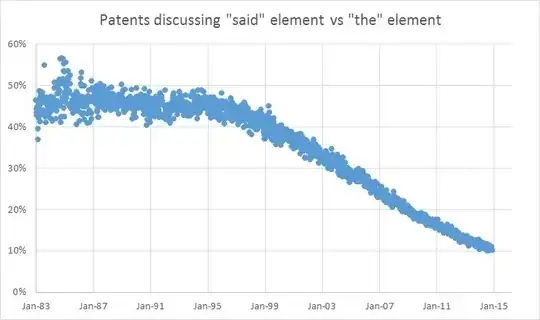It has long been an unrealized desideratum for legal language to be unambiguously interpreted based just on the words of the text, making use only of logic, grammar, and lexical knowledge. The definite article "the" is a bit lax in how strongly it binds its phrase to another phrase, so while "the wall" refers to some wall that is known, it could be known from general context, and not the sentence. The legal modifier "said", a short form of "aforesaid", is thought to be more precise because something that is "said before" actually has to be mentioned, and this (by rules of literal semantics) limits the referent to something actually mentioned in the text. That isn't necessarily the case with "the". However, there are other tools that can be used to determine intention, involving looking at more of the context, to see if there is any plausible interpretation where "the" doesn't make these walls coreferential. "Said" is discussed p. 89 in Tiersma Legal Language, where he points out that using "said" can be just as ambiguous as "the", for instance:
Lessee promises to pay a cleaning deposit of $200 and a damage deposit
equivalent to one month's rent. Said deposit shall accrue interest at
a rate of five percent per annum.
Which deposit? And certainly not both. The only way in which "said" can ever be superior to "the" is in forcing reference-resolution to be something in the text, not generally "in the discourse". And even then, it's usually easy to tell what the actual intent was – if one bases interpretation on intent.
Now turning to broader details of your example, what you give is not a sentence, it is just a noun phrase -- you minimally need a verb to be a sentence. The phrase identifies a building whose salient characteristic is a wall, where the wall has a particular purpose, and it also says that there is both opaque ink and a painted message. The non-strange interpretation of that is that you first paint it with opaque ink (actually, we're in trouble here since you don't paint with ink), and then you add a message (using paint, it appears). But since it didn't say "and then" or anything else, the chronological sequence isn't specified, so either order of adding things to the wall is consistent with the text. Selection of "the" vs. "said" has absolutely no effect on that interpretation.
